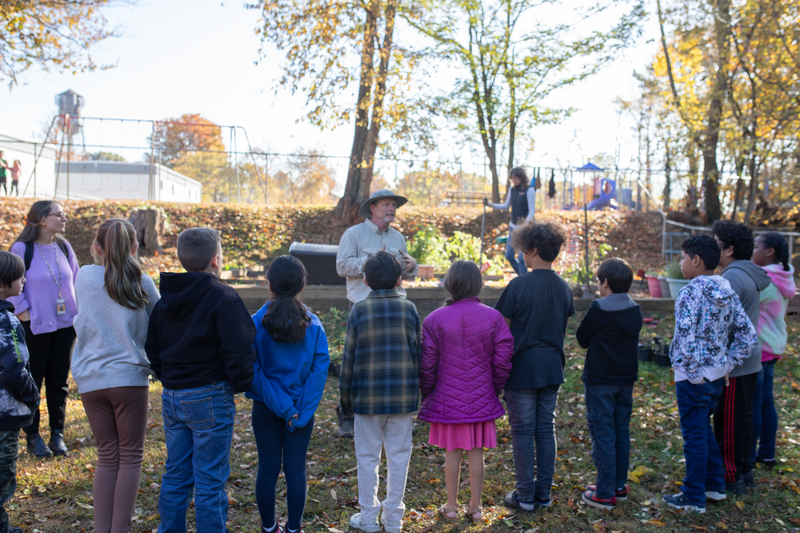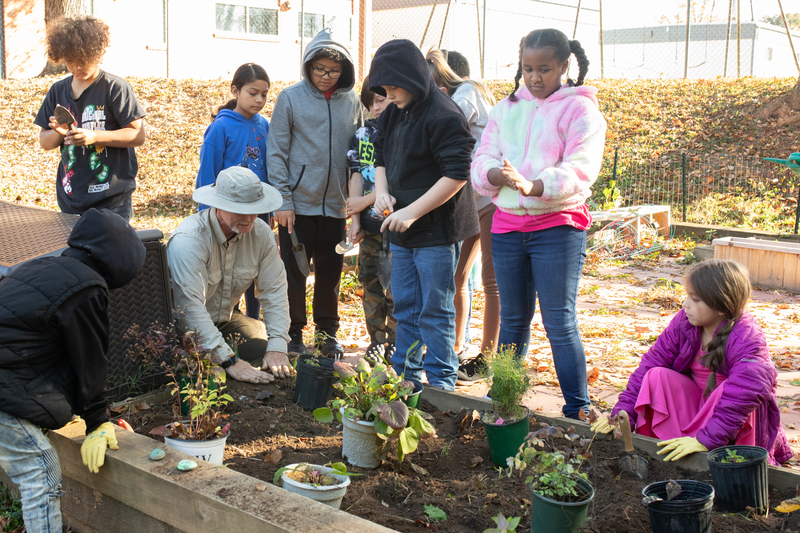Johnston Elementary School’s Garden will soon be abuzz with some new native pollinator friends!
Students, with the help of the Fish and Wildlife Service’s Bryan Tompkins’ and Buncombe County Schools (BCS) K-12 Science Coordinator Kate Whittier’s new Pollinator Garden curriculum, planted an array of pollinator-friendly plants. Not only did students get a hands-on lesson on how to plant a plant, but they were able to put theory into practice about how pollinators work. The plants are native species designed to create homes and food for North Carolina’s over 500 species of bees, 3000 species of moths, 800 species of Butterflies, and other pollinators such as beetles and flies. Many of the plants are donated by the Carolina Native Nursery, and the greenhouse in which they live is supported by Asheville Greenworks.

“The use of native plants in the garden is a better choice for creating space for our pollinators,” said Tompkins. “People aren’t generally aware of the vast array of native pollinators we have and their importance on the landscape. With this curriculum, we can not only teach students about pollinators and all the beautiful native plants they rely on, but get them in the dirt and planting plants.”
Johnston Elementary’s garden is still relatively new, having been built last year. Since then, it has been home to a variety of projects and plants, but the pollinator garden is a big step in folding it into a larger curriculum that teaches our students about the environment, ecology, and gardening in a holistic way. This hands-on, garden-centered approach to teaching is available at other schools at BCS but Johnston is the first to get the full curriculum laid out by Tompkins and Whittier.

“The curriculum brings in opportunities for teachers to teach about science, history, and art with pollinator science as a base,” said Tompkins. “There are activities, research, and art components in this curriculum. They have a plan that provides them with state-standard, researched material, which frees up teachers to spend more time delving into the curriculum rather than creating it from scratch.”
While the curriculum does start in the classroom, it takes students outside and into the garden, an important aspect according to Tompkins.
“There’s something necessary for human happiness in nature,” he said. “Not every student gets access to it, especially these days. Getting down, feeling the dirt, being part of the earth, getting to experience something new and outside of their comfort zone, that is one of the biggest and most important aspects of the whole program.”
“Students are learning the interconnectedness of plants and pollinators that will hopefully instill a lifelong commitment to sustainability,” said Whittier.

As the new plants grow, so too do the students of Johnston Elementary, rising to new heights every day.

